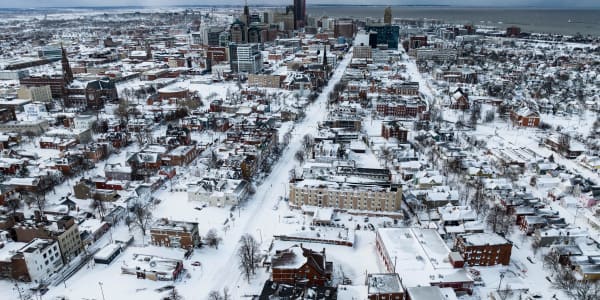
What makes some states more competitive than others in the battle for business and jobs? The calculus has never been more complicated than it is now, with an escalating trade war, historic labor shortages, aging infrastructure and a record economic expansion showing signs of stress.
Fortunately, America's Top States for Business in 2019 is back to make sense of it all. Our 13th annual study, coming soon, uses much of the same data that companies big and small consider when deciding where to locate and expand. These days, some of those decisions are capturing the nation's attention in a big way.
Consider Amazon's $5 billion sweepstakes for its so-called HQ2 project, which drew bids from 238 cities across North America. Or look at Taiwanese electronics manufacturer Foxconn's less public search for a spot for a major U.S. manufacturing and technology complex. The judgments both companies rendered — and the fallout that followed — speak volumes about what is at stake.
Citing factors including abundant talent, infrastructure, and quality of life, Amazon announced in November that it would split the project between Virginia and New York, with a smaller piece going to Tennessee. But the company abruptly pulled out of New York when a faction of community groups and politicians including U.S. Rep. Alexandria Ocasio-Cortez raised concerns about upheaval in Long Island City, Queens, and about billions in subsidies for a company that has plenty of its own resources. Amazon's experience in New York — and New York's experience with Amazon — are proof that these decisions do not occur in a vacuum.
Meanwhile, questions are swirling around Foxconn's promise to build a $10 billion facility in Racine County, Wisconsin. At a White House ceremony in 2017, President Donald Trump, then-Wisconsin Gov. Scott Walker, and Foxconn Chairman Terry Gou said the project would almost single-handedly revitalize American manufacturing. The company said it had chosen Wisconsin based on its workforce, infrastructure and education system. It also did not hurt that Wisconsin offered Foxconn a rich package including $2.85 billion in direct subsidies, along with other tax breaks and infrastructure improvements bringing the total to more than $4 billion.
But two years later the project has fallen woefully behind schedule, failed to meet hiring targets, and Foxconn has changed the facility's focus to technology development, likely reducing the number of manufacturing jobs. Gov. Tony Evers — who defeated Walker last year in part due to backlash over the Foxconn project — is seeking to renegotiate the deal.
Stories like these play out on a much smaller scale practically every day in every state. Our annual Top States study analyzes all of the factors at play, shows which states are positioned to succeed and which states are not.
Our methodology scores the states in 10 categories of competitiveness: Workforce, Economy, Infrastructure, Cost of Doing Business, Quality of Life, Education, Technology and Innovation, Business Friendliness, Access to Capital and Cost of Living. We weight the categories based on how frequently states cite them in their economic development marketing pitches. That way, we are judging the states based on their own criteria.
But the numbers are just the start. Each year, we take an in-depth look at the issues surrounding state competitiveness, and the tools states are using to fight the battle for business. And we bring you exclusive commentary from governors, business leaders and others who navigate this increasingly tricky landscape.
We also want to hear from you. Tell us what you think using the social media hashtag #TopStates. And check back here often as we prepare to countdown America's Top States for Business.






